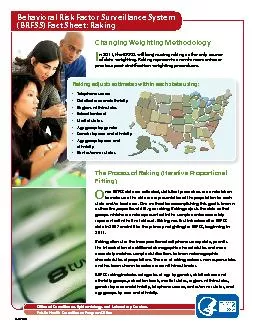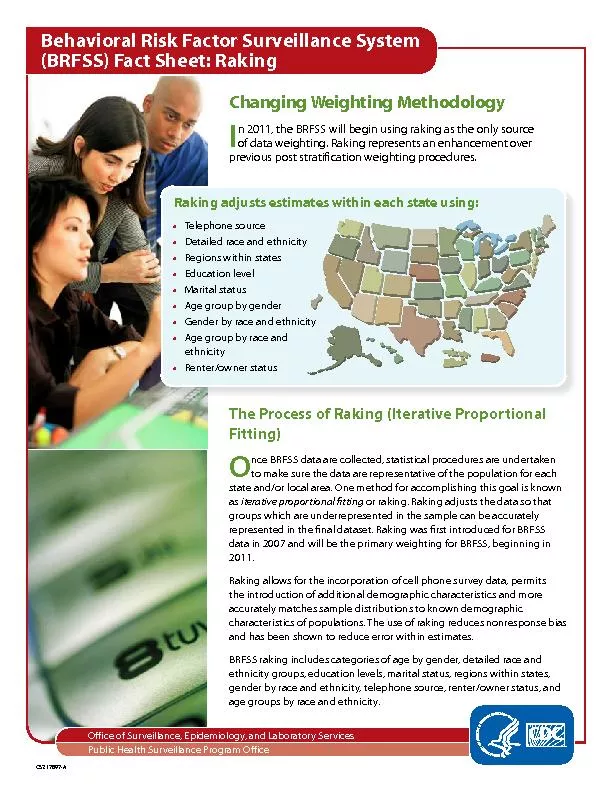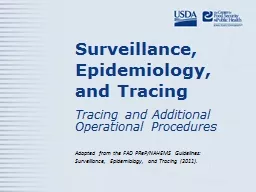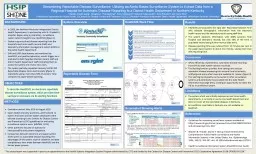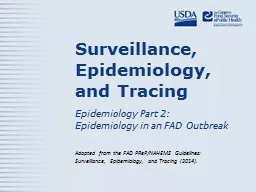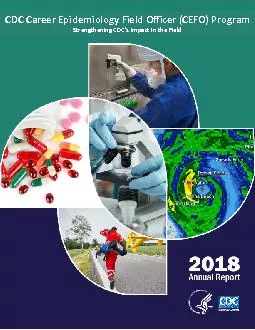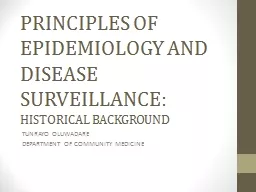PDF-Office of Surveillance, Epidemiology, and Laboratory Services Public H
Author : liane-varnes | Published Date : 2015-10-03
Raking adjusts estimates within each state using Telephone source Detailed race and ethnicity Regions within states Education level Marital status Age group by gender
Presentation Embed Code
Download Presentation
Download Presentation The PPT/PDF document "Office of Surveillance, Epidemiology, an..." is the property of its rightful owner. Permission is granted to download and print the materials on this website for personal, non-commercial use only, and to display it on your personal computer provided you do not modify the materials and that you retain all copyright notices contained in the materials. By downloading content from our website, you accept the terms of this agreement.
Office of Surveillance, Epidemiology, and Laboratory Services Public H: Transcript
Download Rules Of Document
"Office of Surveillance, Epidemiology, and Laboratory Services Public H"The content belongs to its owner. You may download and print it for personal use, without modification, and keep all copyright notices. By downloading, you agree to these terms.
Related Documents

